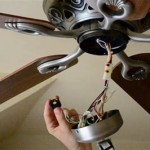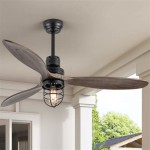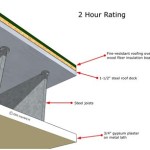How To Make Ceiling Tiles Look Good
Ceiling tiles, commonly used in suspended ceilings, offer a cost-effective and relatively easy-to-install solution for covering up structural elements, concealing wiring and ductwork, and improving acoustics. However, over time, these tiles can become stained, discolored, or simply appear outdated, detracting from the overall aesthetics of a room. Enhancing the appearance of ceiling tiles involves a combination of cleaning, repair, and potentially, aesthetic modification. This article outlines several practical methods to improve the look of ceiling tiles and revitalize the overall appearance of a room.
Cleaning Ceiling Tiles
One of the most straightforward and impactful ways to improve the appearance of ceiling tiles is through thorough cleaning. The presence of dust, cobwebs, and stains can significantly dull the look of even relatively new tiles. Before embarking on any cleaning process, it's crucial to identify the type of ceiling tile installed. Common types include mineral fiber, fiberglass, and vinyl-faced tiles. Each material requires a different approach to cleaning to avoid damage.
For most types of ceiling tiles, a gentle dry cleaning is recommended as a first step. Use a soft brush attachment on a vacuum cleaner to carefully remove loose dust and debris from the surface. Pay close attention to corners and edges where dust tends to accumulate. Avoid using excessive pressure, as this can damage the delicate surface of the tile. A microfiber cloth can also be used to gently wipe down the tiles, but ensure it's clean and dry to prevent streaks.
For more stubborn stains, a slightly damp sponge or cloth may be necessary. However, it is imperative to test the cleaning solution on an inconspicuous area of the tile first to ensure it doesn't cause discoloration or damage. A mild solution of dish soap and water is generally safe for most tile types. Wring out the sponge thoroughly to prevent excessive moisture absorption, and gently blot the stain rather than rubbing it vigorously. Wipe the area with a clean, damp cloth to remove any soap residue and allow the tile to air dry completely.
Specific types of stains may require specialized cleaning solutions. For example, grease stains may respond to a degreasing cleaner, while water stains might require a solution containing bleach. However, bleach should be used with extreme caution, as it can discolor some tile types. Always dilute the solution according to the manufacturer's instructions and test it in an inconspicuous area before applying it to the entire stain.
It is important to note that some older or heavily stained ceiling tiles may not be salvageable through cleaning alone. In such cases, replacement or more extensive renovation techniques may be necessary.
Repairing Damaged Ceiling Tiles
Beyond mere surface cleaning, addressing physical damage to ceiling tiles is essential for improving their overall appearance. Common types of damage include cracks, chips, water stains, and sagging. Repairing these issues can significantly enhance the visual appeal of the ceiling and prevent further deterioration.
Minor cracks and chips can often be repaired using a paintable caulk or patching compound specifically designed for ceiling tiles. Apply a small amount of the compound to the damaged area using a putty knife, smoothing it out to blend seamlessly with the surrounding surface. Allow the compound to dry completely according to the manufacturer's instructions, and then sand it lightly to create a smooth, even finish. Finally, paint the repaired area to match the color of the existing tile.
Water stains are a common issue in ceilings, often indicating a leak from above. Before attempting to repair the stain, it's crucial to address the underlying leak to prevent further damage. Once the leak is resolved, allow the stained area to dry completely. If the stain is relatively light, it may be possible to cover it with a stain-blocking primer followed by a coat of paint that matches the tile. For more severe stains, it may be necessary to replace the affected tile entirely.
Sagging ceiling tiles typically indicate a problem with the support structure or excessive moisture absorption. If the support structure is damaged, it will need to be repaired or replaced. If moisture is the issue, identify and address the source of the moisture. For tiles that have sagged due to moisture absorption but are otherwise in good condition, it may be possible to gently dry them out using a dehumidifier or fan. However, severely sagged tiles may need to be replaced.
In cases where a tile is beyond repair, replacement is often the most effective solution. When replacing tiles, it's important to match the existing style, size, and color as closely as possible to ensure a seamless appearance. Carefully remove the damaged tile from the grid and install the new tile in its place. Ensure the new tile is properly seated in the grid to prevent sagging or misalignment.
Aesthetic Modification of Ceiling Tiles
Beyond cleaning and repair, several aesthetic modifications can significantly improve the look of ceiling tiles and transform the overall appearance of a room. Painting, texturing, and even replacing tiles with decorative alternatives can offer a fresh and updated look.
Painting ceiling tiles is a relatively simple and cost-effective way to refresh their appearance and cover up minor imperfections. However, it's crucial to use the right type of paint and application technique to avoid damaging the tiles or compromising their acoustic properties. Water-based acrylic paints are generally recommended, as they are less likely to damage the tiles than oil-based paints. Apply the paint in thin, even coats using a roller or brush designed for textured surfaces. Avoid applying excessive paint, as this can weigh down the tiles and cause them to sag.
Before painting, it's essential to clean the tiles thoroughly and apply a stain-blocking primer to prevent any existing stains from bleeding through the paint. Remove the tiles from the grid before painting to ensure a more even and professional finish. Allow the paint to dry completely before reinstalling the tiles.
Adding texture to ceiling tiles can also enhance their visual appeal. This can be achieved using textured paint, stencils, or even by applying decorative paper or fabric to the tile surface. Textured paint can add depth and dimension to the ceiling, while stencils can create intricate patterns and designs. Applying decorative paper or fabric can offer a more personalized and unique look. However, it's important to choose materials that are lightweight and won't weigh down the tiles.
Another option is to replace existing ceiling tiles with decorative alternatives. Numerous decorative ceiling tiles are available in a variety of styles, materials, and patterns. These tiles can add a touch of elegance or sophistication to a room, transforming its overall appearance. Options range from tin-look tiles to faux wood and even embossed designs. When selecting decorative tiles, it's important to consider the overall style of the room and choose tiles that complement the existing décor.
Adding lighting effects can also dramatically improve the appearance of a ceiling with tiles. Recessed lighting, track lighting, or even strategically placed spotlights can highlight certain areas of the ceiling and create a more visually appealing and dynamic space. Consider the placement and intensity of the lighting to achieve the desired effect.
Careful planning and execution are essential when undertaking any aesthetic modification project. Always test any new techniques or materials in an inconspicuous area before applying them to the entire ceiling. Take your time and pay attention to detail to ensure a professional and aesthetically pleasing result.
By following these guidelines, one can effectively improve the appearance of ceiling tiles, enhancing the overall aesthetic of any room. Regular cleaning, prompt repair of damage, and thoughtful aesthetic modifications can transform a dated or unsightly ceiling into a visually appealing and functional element of the space.

A Drop Ceiling That Looks Better Than Drywall How To Install In Basement Diy Youtube

Diy Drop Ceiling Tiles That Aren T Ugly Youtube

How To Easily Update An Ugly Drop Ceiling

Creative Drop Ceiling Ideas B4 And Afters

Diy Drop Ceiling Tiles That Aren T Ugly

Ceilings Armstrong Residential

Spruce Up Those Suspended Ceilings With Head Turning Tiles O Donnell Bros Inc

Diy How To Update Old Ceiling Tile Pink Little Notebookpink Notebook

11 Ways To Cover A Hideous Ceiling That Anyone Can Do

Completely Cover A Drop Ceiling Ceilings Armstrong Residential








